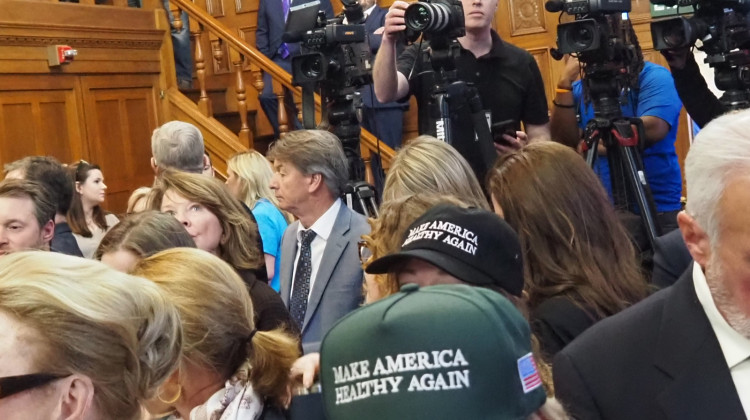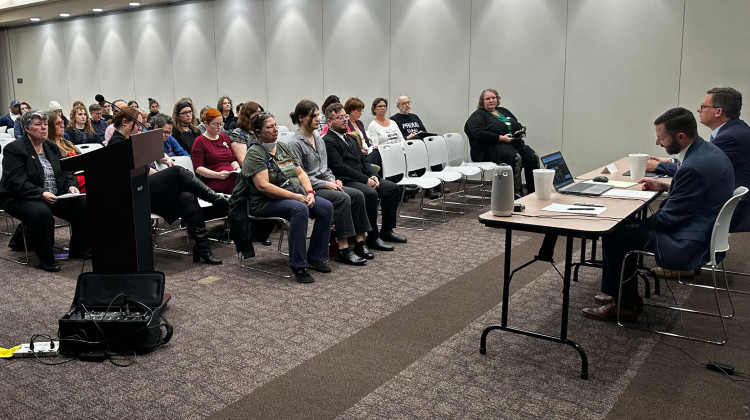
The Environmental Working Group found high levels of PFAS in baby products like crib mattresses. Without more guidance from the federal government, consumers often have to rely on groups like this to know what products do and do not contain PFAS.
Ajay Suresh / Wikimedia CommonsHow can you tell if a product contains toxic PFAS? It’s not so easy.
PFAS have been found in all kinds of non-stick, waterproof and stain-resistant products — from pans, to carpets to fast-food wrappers.
Among other things, exposure to them has been linked to kidney cancer, problems with the immune system and developmental issues in children.
Right now, the federal government doesn’t require products that contain PFAS to be labeled and doesn’t check companies' claims that products are PFAS-free.
Gretchen Salter is a strategic advisor with Safer States — an alliance of groups working to eliminate PFAS from the environment. She said states are stepping up where the federal government has lagged behind.
Salter said eight states have banned PFAS from carpets and rugs, 12 states have banned it food packaging, and another 12 have banned PFAS in fire-fighting foam — including Indiana.
Salter said though fewer states require manufacturers to disclose PFAS, state laws regulating PFAS can impact the market as a whole. Companies generally don’t want to make two of the same thing.
“When California and New York passed legislation requiring the removal of PFAS from textiles, particularly outdoor wear. Dick's Sporting Goods, Patagonia, the North Face all agreed to remove PFAS from their products nationally," she said.
Join the conversation and sign up for the Indiana Two-Way. Text "Indiana" to 765-275-1120. Your comments and questions in response to our weekly text help us find the answers you need on climate solutions and climate change at ipbs.org/climatequestions.
Salter said an Indiana bill that attempted to redefine PFAS chemicals as only those commonly in circulation today would have had the opposite effect.
Still, with a lack of federal oversight, these labels can be confusing. Marta Venier is an analytical chemist and assistant professor at the Indiana University O'Neill School of Public and Environmental Affairs.
“It's really important to read what these labels claim and, in case a person is not sure, it's always good to go to the manufacturer’s website directly or even give them a call and see what they answer," she said.
READ MORE: What to do if there are PFAS in your water
Venier said just because a product says it doesn’t contain one kind of PFAS, like PFOA, doesn’t mean it’s free from all toxic PFAS.
Groups like the Green Science Policy Institute are working to test products and make a list of those that are PFAS-free. The Environmental Working Group found tested PFAS in baby products like crib mattresses.
Rebecca is our energy and environment reporter. Contact her at rthiele@iu.edu or follow her on Twitter at @beckythiele.
 DONATE
DONATE






 Support WFYI. We can't do it without you.
Support WFYI. We can't do it without you.